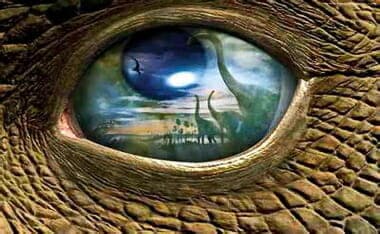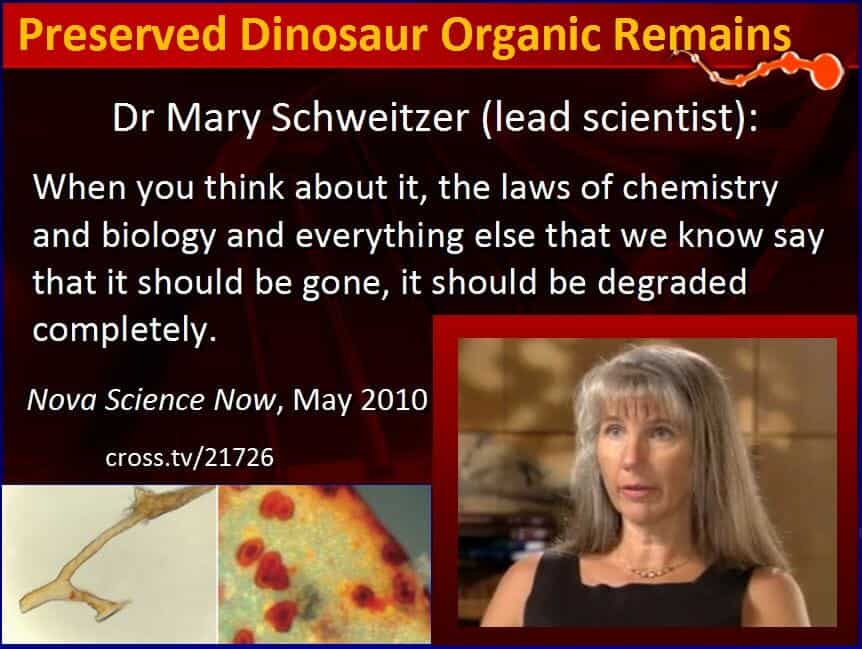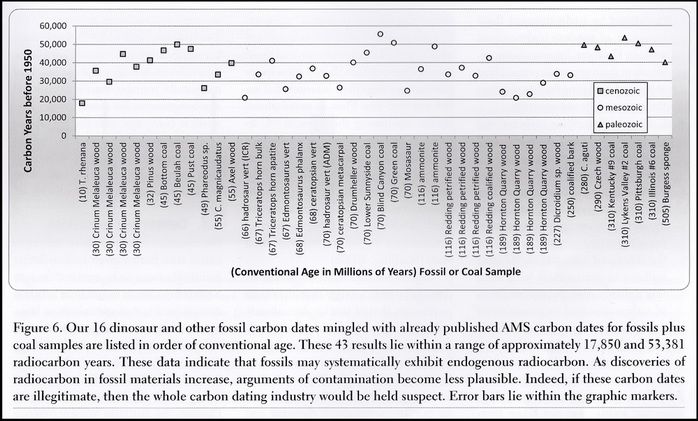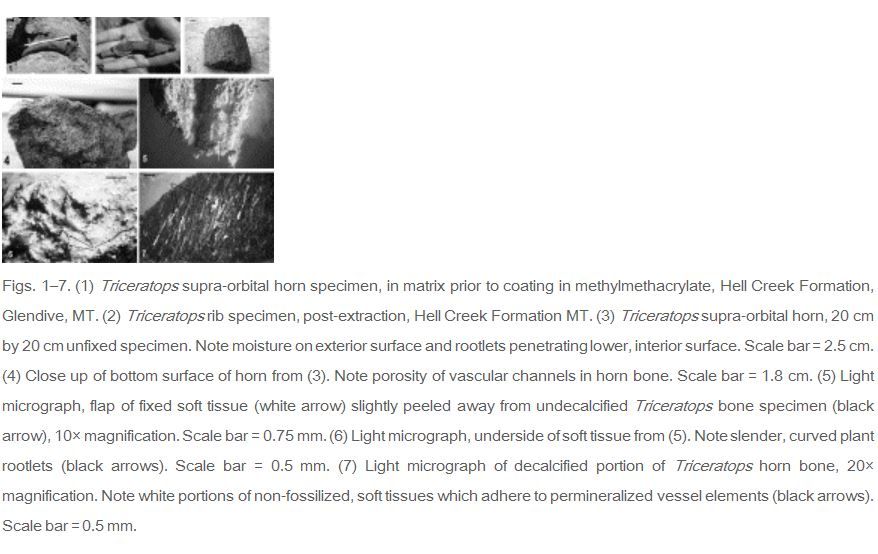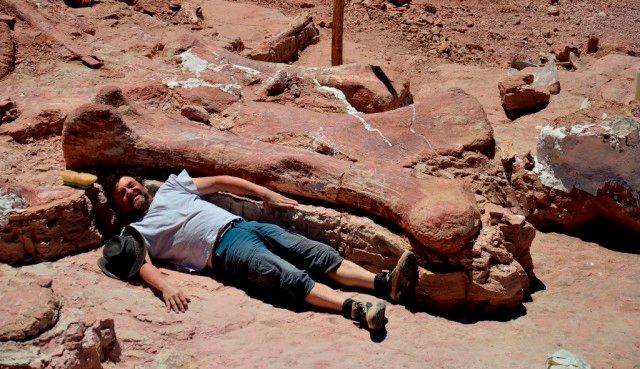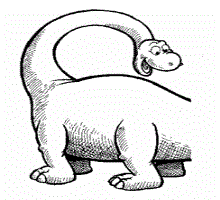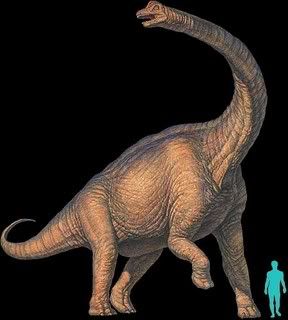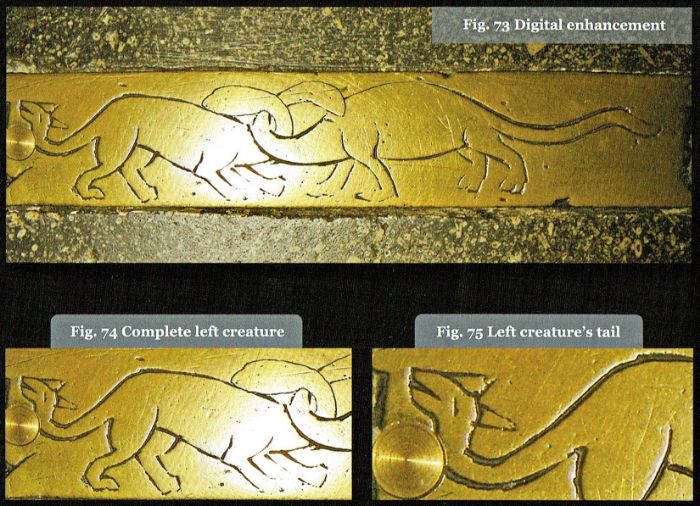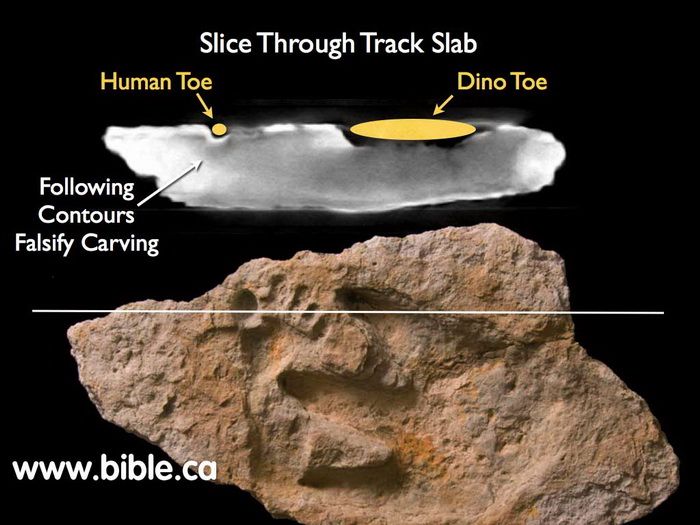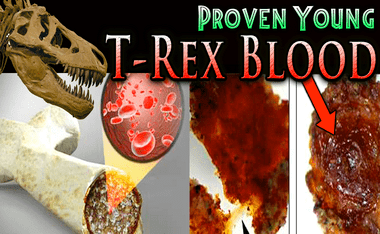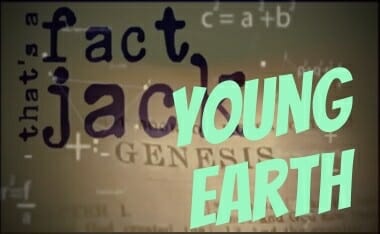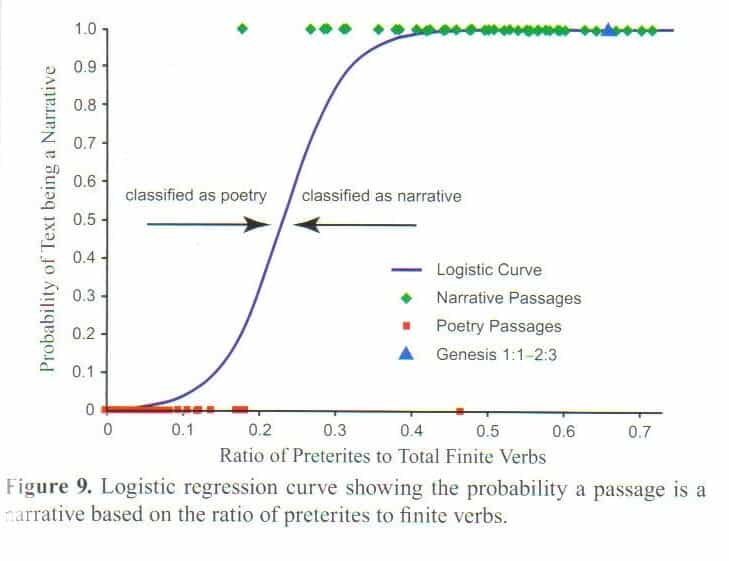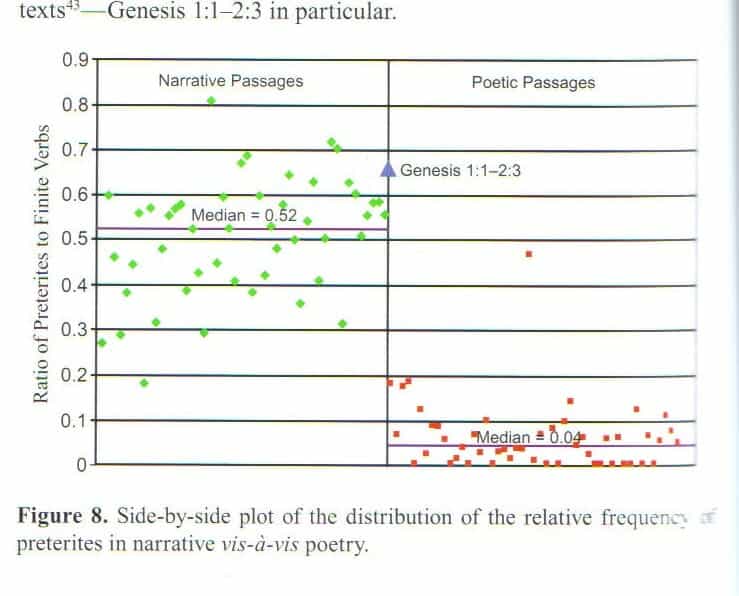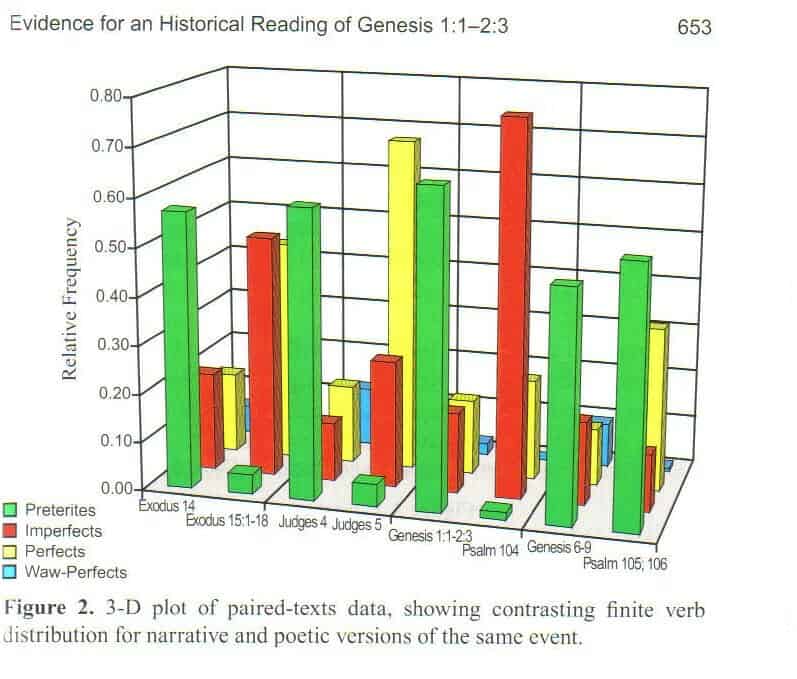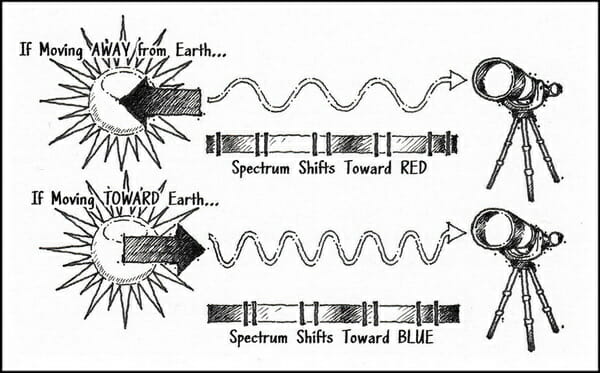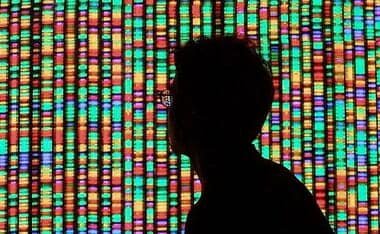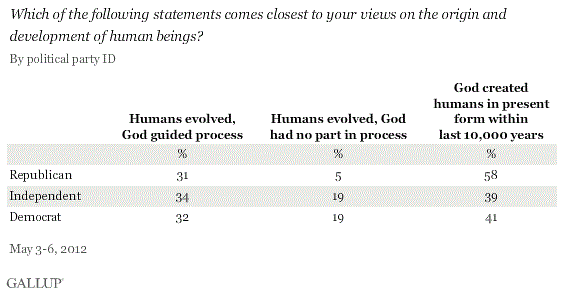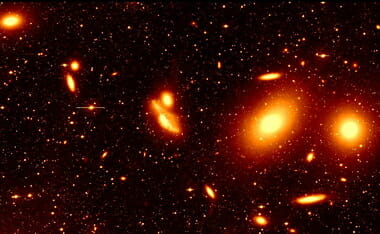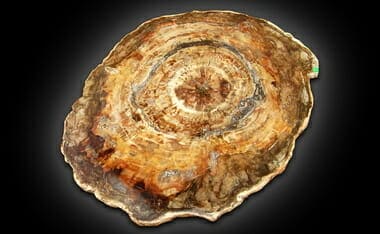 Contents:
Contents:
- Angkor Wat Carving;
- T-Rex Blood Cells (see Nature for more info);
- Triceratops Horn (see Science Direct to purchase paper);
- Dinosaurs and the Bible;
- Duckbill Dinosaur;
- Michael Cremo’s Take;
- The Bell Tomb
- Dinosaur Tracks? [Maybe];
- Radioactive Dating;
- Extras.
I have updated the “Triceratops Horn” section, as, the Los Angeles County Superior Court Ruled against California State University Northridge (CSUN) in favor of Dr. Mak Armitage.
This will be an update to previous posts on this .com and my previous blog (BlogSpot). It will serve as a part-two-of-a-two-part discussion to young earth views that deals with evidences of mankind throughout all geological ages. While this is far from an in-depth excoriation of the evidences, it is a good introduction to some of them. I do not start off or bring up young earth creationism typically. Typically I will lead off with talking about theistic evidences [MACRO evidences for God] that assume a mainstream assumption about the age of the cosmos/earth. But the below evidences can be incorporated into a response when challenged about the topic. (See also: “Two Ways to Look At Origins;” and, “Reason and Faith.”)
As usual, all graphics are linked for further resource hunting. One may wish to visit my post on Archaeology and the Bible, which includes some responses to skeptics from a decade[+] ago.
+900yr-old Carving In the Ta Prohm Temple of Angkor Wat
This was part of a larger post/blog I did entitled, “Dinosaurs, the Bible, and Creation Proofs.” After a discussion with a fellow believer I wanted to get this video isolated here and it is included in my “Must See Videos” section in the left-hand column. With that small intro, here it is:
The above videos are one OF MANY evidences that humankind at one point may have seen dinosaurs… more evidence exists that just what I am providing here, but the above is one of the clearest examples of not just ancients finding bones, but see skin, muscle, and eyes of a stegosaurus.
Tyrannosaurus (T-Rex) Blood Cells & Protein 
By using immunological tests, Gerard Muyzer of Leiden University in the Netherlands, isolated samples from some fresh T-Rex bone that had a specific bone protein (osteocalcin) in them. These proteins, reported in Geology magazine (Oct. 1992), are very unstable, and cannot last for very many years once the creature who carries them dies [perm-a-freeze cannot account for the longevity evolution gives to these proteins]. The photo [right] is a newer find where malleable flesh and intact blood cells are throughout. H/t to The Pearcey Report for this story from WND that keeps evolving:
Paleontologist Mary Schweitzer of North Carolina State University first claimed to have isolated soft tissues and collagen from a Tyrannosaurus rex leg bone several years ago.
But because the leg was broken during excavation, the evidence was damaged and could never be independently confirmed. (And evidence keeps amassing to support their claims as Nature discusses.)
Schweitzer then examined a more pristine leg of a plant-eating hadrosaur excavated from sandstone and found even better samples of soft tissue, according to the report.
“Our findings demonstrated that it did contain basement membrane matrix,” said Lewis Cantley, chief of the division of signal transduction at Beth Israel Deaconess, and a co-author on the Science study. Basement membranes, which degrade and regenerate during development and wound repair, comprise a continuous extracellular matrix that links endothelial, epithelial, muscle, or neuronal cells and their adjacent stroma.
In situ mass spectrometery independently verified amino acids in dinosaur tissues, including the collagen signature amino acid, hydroxylated proline.
 While scientists previously questioned the possibility that soft tissue could survive tens of millions of years of fossilization, few seem to be questioning their assumptions that dinosaurs actually went extinct 65 million years ago.
While scientists previously questioned the possibility that soft tissue could survive tens of millions of years of fossilization, few seem to be questioning their assumptions that dinosaurs actually went extinct 65 million years ago.
Young earth proponents see something entirely different in the findings. As one creationist noted: “There’s no way this blood could be 80 million years old. The evolutionists are just saying so because they cannot bear the thought of recent dinosaurs causing their millions of years scenario to come crashing down. Without the millions of years, Darwinism is dead, dead, dead.”
The evidence that hemoglobin has indeed survived in this dinosaur bone (which casts immense doubt upon the ‘millions of years’ idea) is, to date, as follows:
- The tissue was coloured reddish brown, the colour of hemoglobin, as was liquid extracted from the dinosaur tissue.
- Hemoglobin contains heme units. Chemical signatures unique to heme were found in the specimens when certain wavelengths of laser light were applied.
- Because it contains iron, heme reacts to magnetic fields differently from other proteins—extracts from this specimen reacted in the same way as modem heme compounds.
- To ensure that the samples had not been contaminated with certain bacteria which have heme (but never the protein hemoglobin), extracts of the dinosaur fossil were injected over several weeks into rats. If there was even a minute amount of hemoglobin present in the T. Rex sample, the rats’ immune system should build up detectable antibodies against this compound. This is exactly what happened in carefully controlled experiments.
See:
- Dinosaur Soft Tissue: In seeming desperation, evolutionists turn to iron to preserve the idea of millions of years;
- and, DNA And Bone Cells Found In Dinosaur Bone.
(Above graphic) The numbers in the “( )” represent millions of years, so “(10)” would mean 10-million years old. And again, the labs that do this for the dinosaur bones cannot re-calibrate their machines off of a slug because all similar non-mineralized bones have C14 in them (take note I included the non-creationist reference at the bottom of the small quote to point out that the scientific community is finding this troubling):
The consistent failure of carbon dating facilities to find carbon-dead samples to serve as baselines highlights the regularity with which they have detected measurable amounts of radiocarbon in samples from Phanerozoic settings (Nadeau et al., 2001[1]). Simply put, carbonaceous materials from any portion of the geologic column deposited millions of years ago should, with the exception of rare instances of contami¬nation, contain zero “C atoms. This reasonable assumption follows from the half-life of “C, which places a time limit on its duration of about 100,000 years until the number of “C atoms become too few to detect with accelerator mass spectrometry (AMS) (Hebert, 2013[2]).
[1] Nadeau, M.-J., P.M. Grootes, A. Voelker, F. Bruhn, A. Duhr, and A. Oriwall. 2001. Carbonate ‘4C background: does it have multiple personalities? Radiocarbon 43:2A, 169-176.
[2] Rethinking Carbon-14 Dating: What Does It Really Tell Us about the Age of the Earth? by Jake Hebert, Ph.D.
Triceratops Horn Gets Dr. Mark Armitage fired from CSUN
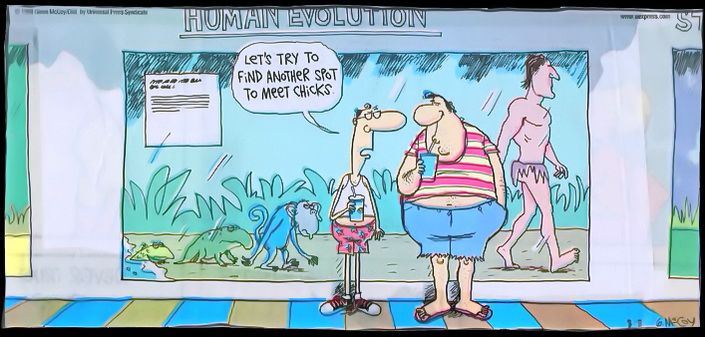
Question:
What happens when you publish a peer-reviewed paper that states inconvenient facts against Darwinism? Better yet, photos (see near bottom, click to enlarge) that cast doubt on prevailing paradigms.
You get fired.
…UPDATE (Oct 1st, 2016)
Just to recap this case before the good news:
…In February 2013, he published his findings in Acta Histochemica, a journal of cell and tissue research (M. H. Armitage and K. L. Anderson Acta Histochem. 115, 603–608; 2013). Two weeks later, he was fired from his job at California State University, Northridge (CSUN), where he managed the biology department’s electron and confocal microscopy suite.
Now he is embroiled in a long-shot legal fight to get his job back. In July, his lawyers filed a wrongful-termination suit claiming that religious intolerance motivated the dismissal: as a young-Earth creationist, Armitage says that finding soft tissue in the fossil supports his belief that such specimens date to the time of the biblical flood, which he puts at about 4,000 years ago.
The suit alleges that faculty members hostile to Armitage had him fired because they could not stand working with a creationist who had been published in a legitimate scientific journal. He and his attorneys at the Pacific Justice Institute, a conservative legal organization based in Sacramento, California, that focuses on religious and family issues, have repeatedly made that claim in the press. But specialists in US labour law suggest that his claim of religious intolerance might have difficulty standing up if the case goes to trial.
In recent years, a schoolteacher, academic and NASA employee who were creationists have claimed that they were fired unjustly for their religious beliefs. (None were reinstated.) But what makes this case different is that Armitage managed to survive for years in a mainstream academic institution and to publish research in a respected peer-reviewed journal….
(NATURE ~ See also: THE COLLEGE FIX)
Well, the court ruled in Dr. Armitage’s favor (Dr. Armitage posted this video Oct 1st, 2016):
- The Los Angeles County Superior Court Ruled against California State University for wrongfully terminating microscopy laboratory director Mark Armitage in Spring of 2013. The judge found that they discriminated against Armitage’s religion after he published his findings of soft tissues he found in a Triceratops horn from Montana. The university chose to settle out of court rather than to appear in court for a jury trial.
BACK TO ORIGINAL POST…
Mark Hollis Armitage
Kevin Lee Anderson
Department of Biology, California State University, 18111 Nordhoff Street, Northridge, CA 91330-8303, USA
Abstract
Soft fibrillar bone tissues were obtained from a supraorbital horn of Triceratops horridus collected at the Hell Creek Formation in Montana, USA. Soft material was present in pre and post-decalcified bone. Horn material yielded numerous small sheets of lamellar bone matrix. This matrix possessed visible microstructures consistent with lamellar bone osteocytes. Some sheets of soft tissue had multiple layers of intact tissues with osteocyte-like structures featuring filipodial-like interconnections and secondary branching. Both oblate and stellate types of osteocyte-like cells were present in sheets of soft tissues and exhibited organelle-like microstructures. SEM analysis yielded osteocyte-like cells featuring filipodial extensions of 18–20 μm in length. Filipodial extensions were delicate and showed no evidence of any permineralization or crystallization artifact and therefore were interpreted to be soft. This is the first report of sheets of soft tissues from Triceratops horn bearing layers of osteocytes, and extends the range and type of dinosaur specimens known to contain non-fossilized material in bone matrix.
From Logos Research Associates
….In 2005, Dr. Mary Schweitzer of North Carolina State University published a ground breaking discovery (see article 1). She and her team of researchers dissected a fossilized Tyrannosaurus rex femur to find inexplicably preserved bone marrow. Two things made this unearthing astounding. First, if the fossils are really millions of years old, they should be completely fossilized by now. Fossilization is the process in which original boney material is replaced by hard minerals. However, in this case, the soft inner parts of the bone were found unfossilized with intact bone marrow. The marrow consisted of soft tissues and intact blood vessels that maintained their elasticity. This is incredible! How could soft, stretchy tissues be preserved in dinosaur remains that evolutionists claim are no younger than 65 million years old? Even in the best state of bone preservation, the soft inner parts should have completely rotted away long ago.
Dr. Schweitzer’s breakthrough publication almost a decade ago has set the stage for additional investigations by many other scientists (see article 2, 3, 4). Since then, the discovery of soft tissues in dinosaur bones has become fairly common (even among different dinosaur species) demonstrating these are not just rare exceptions or anomalies. The latest dinosaur soft tissue finding was a Triceratops specimen found at the Hell Creek formation of Montana by well-published microscopist and former instructor at California State University, Mark Armitage and his colleague Dr. Kevin Anderson of Arkansas State University (see article 5). Their analysis of a Triceratops’ horn showed that it contained original bone, soft tissue, and even complete and exquisitely preserved “bone-building” cells called osteocytes.
As in the case of Schweitzer’s T. rex fossil (see article 1) and other dinosaur soft tissue discoveries like it (see article 2, 3, 4), all the original tissue, both hard and soft, should have wholly disappeared, due either to decay, or to mineral replacement if these bones were millions of years old. The original bone has, however, been preserved down to the most minute detail, as has the soft tissue running through it, including intact blood vessels. As with Dr. Schweitzer’s findings, these tissues were elastic and flexible. Armitage’s research produced breath-taking high resolution micrographs of osteocytes—the tiny cells which, when living, repair and maintain the bone. These detailed micrographs are comparable to those taken of modern bones. (Permission to display published photographs is pending).
Regrettably, those whose worldview requires that dinosaurs lived millions of years are very eager to dismiss the evidence of soft dinosaur tissue (see article 6), but the evidence is now coming from many different scientists (see above links), who are studying a diversity of dinosaurs bones, and publishing in numerous, prestigious scientific journals. Even more disturbing than the attempts to dismiss or discredit the work of these researchers, some of these people are lashing out at the scientists who are making these discoveries. We are very saddened and disturbed to report that Mark Armitage was fired from his position at California State University just days after his paper was published on line. Please pray for Mr. Armitage….
See Also: Cocktails! C14, DNA, collagen in dinosaurs indicates geological timescales are false ~ Photos w/ descriptions below (click to enlarge):
Dinosaurs and the Bible
This article was thanks to the CARM forum/discussion board and can be found in an ENN – Article.
Most complete new giant dinosaur found in Patagonia
RIO DE JANEIRO (Reuters) – Brazilian and Argentine paleontologists have discovered the largely complete fossil of a new species of giant dinosaur that roamed what is now northern Patagonia about 80 million years ago.
The herbivorous Futalognkosaurus dukei measured an estimated 105 feet to 112 feet from head to tail and was as high as a four-storey building. It is one of the three biggest dinosaurs yet found in the world.
[….]
The find pointed to a new lineage of titanosaurs, with particularly bulky necks, he said.
“Its neck was very big in diameter, strong and huge.”
Fossilized remains of an ecosystem from the same Late Cretaceous age, including well-preserved leaves and fish, were also found. The description was published in the latest issue of the annals of the Brazilian Academy of Sciences.
[….]
“The accumulation of fish and leaf fossils, as well as other dinosaurs around the find, is just something fantastic. Leaves and dinosaurs together is a great rarity,” he told Reuters. “It’s like a whole lost world for us.”
He was referring to “The Lost World” by Arthur Conan Doyle, a classic tale set in a remote part of South America where a scientific expedition finds dinosaurs still roaming an isolated plateau.
Some of the leaves made part of the diet of the titanosaur and other specimens found there. The researchers said the fossilized ecosystem pointed to a warm and humid climate in Patagonia, which had forests during the Late Cretaceous period. The area is steppe-like now and almost bare of vegetation.
Researchers believe the carcass of the giant dinosaur, which died of unknown causes, its flesh devoured by predators, was washed into a nearby slow-flowing river, where it created a barrier, accumulating bones and leaves in its structure for many years until all became fossilized.
A fossil of a carnivorous theropod Megaraptor found at the site contained a complete and articulated arm with very large sickle-shaped claws. Previously, similar fragmented bones were interpreted as a foot, researchers said.
The joint Argentine-Brazilian project also works in the Brazilian state of Mato Grosso, where Kellner said an important find has been made but would be revealed at a later date.
Desert-like areas in Argentina are good for preserving fossils, while they are more difficult to find in the wetter soil in Brazil.
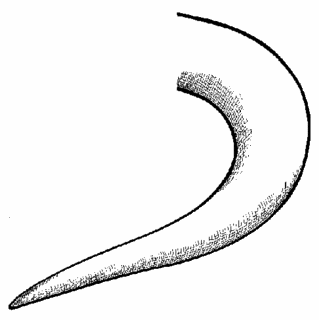
There are a few things I take issue with here, but they are minor. Every fossil find involves a river or a local FLOOD. I just love it as a Young Earth Creationist (YEC) to hear this because it confirms in a major way historical and Biblical accounts of a FLOOD. Again, ALL the fossils found are in flood deposits. Okay, let play a game. The game is “Pin the Tail on the Donkey.”
Except we don’t have a donkey, but I’m sure you can figure it out. We have three creatures needing a tail:
Of course, you are probably wondering why I am displaying these comical pictures, and what — if anything — these pictures have to do with dinosaurs and the Bible! Let me explain. The ancient record of a man named Job is found in the Bible. It goes back to a time over 2,000 years before Christ. The fascinating story of Job is one of the oldest pieces of literature on earth. It was written down just a few hundred years after the flood of Noah’s time. In the 40th chapter of Job’s account, we see the record of the Creator Himself speaking to job. He is drawing Job’s attention to one of the wonders of the creation. Let’s read it.
“Look now at the behemoth, which I made along with you…” (verse 15)
Behemoth in the Hebrew simply means large beast. Most bibles have a marginal note by this verse explaining that this creature was most likely an elephant or hippopotamus (half of the above drawings explained!). God is saying to Job, “take a good look at this creature. I am going to demonstrate something to you.”
- “He eats Grass like an ox.” (Verse 15) The animal must be a vegetarian, but it’s likely larger than an ox.

- “See now, the strength is in his hips [or loins].” (Verse 16) This critter must have powerful legs. So it could be an elephant.
- “His power is in his stomach muscles.” (Verse 16) He apparently has a massive mid-section. If that was all we had to go on we could rightly assume Job may very well be looking at a hippo. But let’s read on.
- “He moves his tail like a cedar.” (Verse 17) ……
Now we have a problem (and the answer to the drawings above). Have you noticed something distinctive about cedar trees?
They are big aren’t they? Now have you seen a tail of an elephant or a hippo? It doesn’t seem that a cedar tree is a very appropriate analogy does it. Let’s re-read – and finish – the verses of study.
Now, I know you are thinking to yourself, “Flood!? Noah!? Bible!? Dinosaurs and man co-existing is outrages by evolutionary terms, I mean, dinosaurs died out at least 64 million years ago! And man didn’t show up on the evolutionary scene till about 1 to 4 million years ago (depending on what evolutionary tree you accept).” Yes, I know this sounds incredible, but some amazing items from history and archaeology are mounting the evidence against this belief that man and dino are separated by massive amounts of time and geological layers. [As hinted at above and below.]
Job 40: 15-24 (KJV)
15 Behold now behemoth [large beast], which I made with thee [all animals and Adam and Eve were created on the sixth day]; he eateth grass as an ox [vegetarian].
16 Lo now, his strength [is] in his loins [large, powerful legs], and his force [is] in the navel of his belly [large mid-section.]
17 He moveth his tail like a cedar [huge tail]: the sinews of his stones are wrapped together.
18 His bones [are as] strong pieces of brass [big bones]; his bones [are] like bars of iron [again, big bones].
19 He [is] the chief of the ways of God [largest or mightiest creation]: he that made him can make his sword to approach unto him [only God can kill him].
20 Surely the mountains bring him forth food, where all the beasts of the field play.
21 He lieth under the shady trees, in the covert of the reed, and fens [we have all seen drawings of these beasts halfway in the water with their head up eating the vegetation on the sides of the banks].
22 The shady trees cover him [with] their shadow; the willows of the brook compass him about [again, in a swamp, or the like].
23 Behold, he drinketh up a river, [and] hasteth not: he trusteth that he can draw up Jordan into his mouth [the NASB says in v. 23: “if a river rages, he is not alarmed. He is confidant, though the Jordan rushes to his mouth”].
24 He taketh it with his eyes: [his] nose pierceth through snares [you cannot catch him].
Here is a paraphrase/adaptation of the above verse:
Although the monstrous creature was obviously a vegetarian, its size was overwhelming. Its hips were built to withstand the enormous force of each pounding step and its midsection was a mass of muscle. Its gigantic tail extended far behind, not unlike a giant cedar tree swaying behind his body. Its bones were built like steel girders with ribs like iron bars to support his enormous weight. Surely this was the greatest among the creatures ever to roam the swamps and rivers of the earth. (Creation.com)
Fresh Duckbill Dinosaur Bones
Newest Discover of soft-dinosaur bones found (click to enlarge):
Actually, soft bones coming from these areas in Alaska are nothing new… but since the famous T-Rex find, it has become kosher to admit them.
Most people think that all known dinosaur bones are fossils, and that this proves dinosaurs died out millions of years ago. Yet “fresh”, unfossilized, dinosaur bones have been found, suggesting that dinosaurs might have lived recently.
In northwestern Alaska in 1961 a geologist found a bed of dinosaur bones in unpermineralized (“unfossilized”) condition. In another case, a young Inuit (Canadian Eskimo) who was working with scientists from Newfoundland’s Memorial University in 1987 on Bylot Island found part of a lower jaw of a duckbill dinosaur. It too was in fresh condition. Here is a portion of an article on this:
The lady was highly skeptical. This guide, who moments before had been discussing animal ecology and evolution, found when confronted with news of the new discovery—that she simply could not believe it. She could not accept that fresh (not permineralized, meaning unfossilized) dinosaur bones had been found in Alaska. Such bones could never have lasted 70 million years, she said.
Unlikely or not, it is a fact that such bones have been found. However, whether they could have lasted in that condition more than a few thousand years is a matter which demands attention.
In 1987, while working with scientists from Memorial University (Newfoundland, Canada) on Bylot Island, just east of the northern tip of Baffin Island, a young Inuit (Canadian Eskimo) picked up a bone fragment. It was identified within days as part of the lower jaw of a duckbill dinosaur and proclaimed to the world as such.1
The story was different however in north-western Alaska. In 1961 a petroleum geologist discovered a large, half-metre-thick bone bed. As the bones were fresh, not permineralized, he assumed that these were recent bison bones. It took 20 years for scientists to recognize duckbill dinosaur bones in this deposit as well as the bones of horned dinosaurs, and large and small carnivorous dinosaurs. Presently William A. Clemens and other scientists from the University of California at Berkeley and the University of Alaska are quarrying the bone bed.2 ….
1. Accounts of this appeared in the popular press, such as in the Edmonton Journal, October 26, 1987, a few months after the event, and in Saturday Night (a monthly magazine of analysis of current events) in August 1989, Vol.104 No.8, pp.16-19.
2. An initial announcement was printed in l985 in Geological Society of America abstract programs Vol.17, p.548. Already in press at that time was an article describing the site and the condition of the bones (Kyle L. Davies, ‘Duck-bill Dinosaurs (Hadrosauridae, Ornithischia) from the North Slope of Alaska’, Journal of Paleontology, Vol.61 No.1, pp.198-200.
The journal Science on December 24, 1993 (pages 2020–2023) reported on the amazing preservation of the bones of a young duckbill dinosaur found in Montana. Under a microscope, the fine structure of the bones was seen to have been preserved to such an extent that cell characteristics could be compared with cells of chicken bone. Claudia Barreto and others said, “In the dinosaur specimens, the same high degree of structural resolution can be seen as in modern specimens.” Even the calcium and phosphorus ratios were comparable. In other words, these appeared to be fresh bones, not fossilized — even though they are claimed to be more than 70 million years old.
Such findings cast serious doubt on the millions of years claimed for the dinosaurs.
Michael Cremo’s Take
A lot of UFO enthusiasts have latched onto Michael’s work. He is of Hindu influence and mentions that the Vedas mention that civilization has been on earth for millions of years. So, a young-earth creationists will look at the same evidence as Dr. Cremo and use IT to bolster the idea that all the animals of the earth were created by the sixth-day of Creation. Here is a short interview of Dr. Cremo on the matter. One should know he is the author of “Forbidden Archaeology“
So, we know — essentially — that Michael Cremo is a new ager… but, we can use the same evidence to show that: “yes, the young earth creationist viewpoint is concurrent with archaeological finds showing that the Hebrew Scripture is correct — man and dinosaur co-existed.” I combined two parts into one video showing an example of one of the oldest evidences of man living in the Cambrian age. As mentioned before, some take the same evidence as examples of the earth being visited by aliens. A great clip either way to show that current theories are off by millions of years:
The Bell Tomb
One of the best sites to follow up on the below are here. So what is the Bell Tomb? Apologetic Press explains a bit:
Yet, consider, for example, the evidence provided by the Bell tomb engravings. In far northern England, near the Scottish border, lies the village of Carlisle. A city with a turbulent history, the Romans built a wall through it, the Vikings invaded it, and the Scots and English fought over it for many years. Located in this English village is the medieval-period Carlisle Cathedral which was founded in A.D. 1122 by King Henry I (“Visit Cumbria…,” n.d.).
On February 11, 1478, Richard Bell was elected Bishop of the Carlisle Cathedral, and served some 17 years before resigning on September 4, 1495. He died in 1496 at the age of 86 and,in keeping with British custom, was buried beneath the floor in the cathedral’s choir (Priory and Raines, p. xxviii). The tomb is now covered by a carpet, to prevent any further effacing of the engravings caused by the human foot traffic of many centuries.
The monumental slab is beautifully inlaid with brass, including the facade of the cathedral in outline relief above and to each side of a solid image of the bishop himself, coupled with a solid strip of brass beneath the bishop. The following image is taken from Hutchinson’s 1794 volume The History of the County of Cumberland (p. 602b)…
[….]
A narrow strip of brass (9½ feet long) that runs around the outer edge of the tomb cover slab bears Latin words translated:
Here lies the Reverend Father Richard Bell sometime Bishop of Carlisle who departed from this life the twenty-forth [sic] day, in the year of the Lord. Among all the faithful departed through the mercy of God may he rest in perpetual peace. Amen (Weston, p. 62).
Interspersed among these Latin words are engravings of a human face, the trinity, and some 18 animals—a veritable “zoo.” Look carefully at these most intriguing engravings…
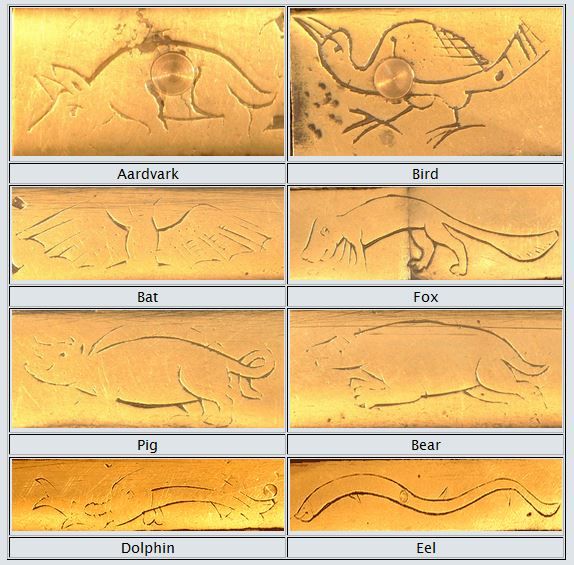

Here is the portion of interest to a-holes like myself:
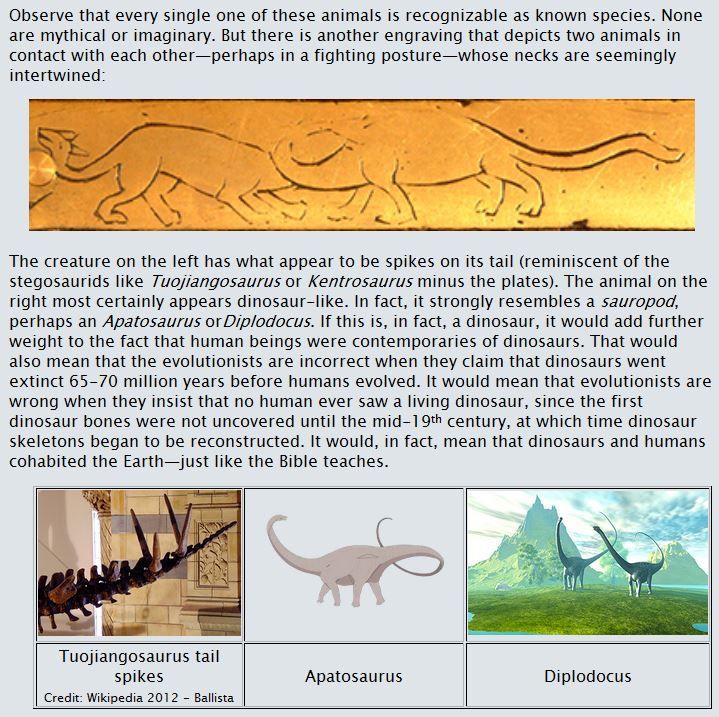
Here is a digitizing of the lines to show them as they originally appeared, from Vance Nelson, Untold Secrets of Planet Earth: Dire Dragons (Red Deer, Alberta Canada: Untold Secrets Publisher, 2013), 62:
The Delk [& Other] Track
At a site that responds to critics about the Delk Track, we get a bit of a background of the print:
In July of 2000, Alvis Delk was wandering through the Paluxy river, in Glen Rose, Texas, when he flipped over a slab of rock which contained a pristine fossil dinosaur track. These tracks are common in the area, and he took it home for a keepsake.
It sat in his living room for eight years.
Sadly, in 2007, he had a bad accident which left him hospitalized for quite some time. When he got home, he needed money to pay off his medical bills, and began to clean off the dinosaur track in hopes that he could perhaps fetch a few hundred dollars for it.
This is when he discovered that was also a fossil human footprint in the rock, still covered under dried clay.
This find has profound ramifications for the Creation/Evolution debate. Evolutionary scholars have admitted that if dinosaurs and humans lived together in the past, then this completely destroys the theory of evolution.
The slab was purchased by the Creation Evidence Museum of Glen Rose, Texas. It was photographed and documented by David Lines, and molded by Dough Harris, Daniel Elif, and myself.
There has been fraud to come out of this area, but the track in question has been Cat-Scanned, unlike the other instances of fraud: 
…In August 2008 the granddaughter of one of the townsfolk who first sold the footprints admitted that her grandfather had carved the human footprints as a means of making money during the depression. No one was surprised. (Update: to be fair, Morris was aware in the 1970s that forgeries had been made by a local trickster. Surprisingly, that did not cause him to question the entire enterprise, or the veracity of eyewitness testimony.)
What is fascinating about this story is that he did not carve the tracks, only the prints that were sold. Creationists were so biased by their perspective that the carved prints tricked them into believing that what they were seeing in the river bed, even though some of the prints were outlandishly large, had to be human….
So this is why the Delk Track stands out. Here is a short video explaining the track:
And the bias of these kind of prints is shown in the assumptions made by evolutionists themselves. One main one being with the Laetoli Footprints… which is: if you remove the evolutionary assumptions, there is very little reason to think that the footprints were made by any creature other than man. And this is the whole idea of this post. One site makes these points:
Even Mary Leakey and her team were amazed “at how very human they were” (Ancestral Passions, p. 486).
Tim White, who was involved in excavating the prints, said:
“They are like modern human footprints. If one were left in the sand of a California beach today, and a four-year-old were asked what it was, he would instantly say that someone had walked there. He wouldn’t be able to tell it from a hundred other prints on the beach, nor would you. The external morphology is the same. There is a well-shaped modern heel with a strong arch and a good ball of the foot in front of it. The big toe is straight in line. It doesn’t stick out to the side like an ape toe, or like the big toe in so many drawings you see of Australopithecines in books” (Johanson and Edey, Lucy: The Beginnings of Humankind, p. 250).
Melvin Lubenow says:
“Interpreting the Laetoli footprints is not a question of scholarship; it is a question of logic and the basic rules of evidence. We know what the human foot looks like. There is no evidence that any other creature, past or present, had a foot exactly like the human foot. We also know what human footprints look like. But we will never know for sure what australopithecine footprints look like, because there is no way of associating ‘beyond reasonable doubt’ those extinct creatures with any fossil we might discover” (Bones of Contention, p. 331).
Russell Tuttle of the University of Chicago did an extensive study of habitually unshod people in the mountains of Peru to use in comparison with the Laetoli footprints. He argued that they “resemble those of habitually unshod modern humans” (“The Pitted Pattern of Laetoli Feet,” Natural History, March 1990).
Dr. Duane Gish observes that since footprints of antelopes, pigs, giraffes, elephants, rhinos, hares, ostriches, and other non-extinct animals were also found at Laetoli, that there is no reason to think that the prints were that of anything other than modern man. “In artists’ conceptions of the scene, we see pictures of giraffes for the giraffe footprints, elephants for the elephant footprints, ostriches for the ostrich footprints, etc. And–humans for the human footprints? Oh, no! Occupying the human footprints we see a sub-human creature, half-ape and half-man. While evolutionists concede that a giraffe must have made the giraffe prints, an elephant must have made the elephant prints, etc., their preconceived ideas about evolution and the age of these formations do not allow them to concede that a human made the human prints. Creationists, accepting the plain facts as revealed by the empirical scientific evidence, believe that the prints were made by modern man–Homo sapiens” (The Fossils Still Say No, p. 276).
Two VERY quick bios of the prints are as follows. Keep in mind the only proof that this was not man making the print is an artistic drawing:
Video description:
In 1978, a team led by Mary Leakey discovered a series of footprints in Tanzania. These are known as the Laetoli footprints. According to many researchers, these footprints are identical to those made by humans. Paleoanthropologist, Donald Johanson stated, ‘Make no mistake about it, they are like modern human footprints’.
Why is it, then, that most scientists reject the idea that humans made these footprints? To understand this odd situation, it’s important to realize that evolutionists think that the footprints were made in mud 3.6 million years ago. Therefore, according to such evolutionary ideas, humans weren’t around then, so the footprints can’t be human! But if a human didn’t make the footprints, who or what did? A Scientific American article acknowledges that this is still an ‘unsolved mystery’ . However, I can’t help but feel it’s a mystery of their own making, caused by their evolutionary thinking, instead of taking the Bible’s history seriously.
Related Articles:
This second video is by Dr. Marc Surtees who has a degree in Applied Biology and a PhD in Zoology.
Radioactive Dating Introduction
And here are, for the curious, a great presentation (which I broke up into each assumption for ease of consumption) dealing with dating methods and there problems for dating the earth in long ages:
Intro: What Is Radioactive Dating & Its Assumptions?
Evidence 1: Challenging Assumptions In Radioactive Decay Rate
Evidence 2: Challenging Assumptions In Radioactive Decay Rate
Evidence 3: Challenging Assumptions In Radioactive Decay Rate
Evidence 4: Challenging Assumptions In Radioactive Decay Rate
Evidence 5: Challenging Assumptions In Radioactive Decay Rate
Just A Couple Documentaries
One of my favorite short documentaries about Geology (below). Guy Berthault discusses some evidences from deep sea drilling, deposits at the mouths of rivers, and work done in concert with hydrologists at the Colorado State University hydraulics laboratory at Fort Collins.
I highly recommend watching these two short videos:
★ Geo-Blunder: No “Millions of Years”! – 3minutes
★ Fossils in Layers Made By Mt. St. Helens – 4minutes
Below video:
“Guy Berthault uses laboratory and sediment flume experiments to test accepted principles for the formation of strata. He shows, using easy to follow computer animation, that in moving currents several of the basic principles of stratigraphy do not apply. These principles, including the principles of superposition and continuity, are applicable only in calm water. He applies flume experiments to the real world of strata, mainly the formation of the layers in the Grand Canyon. Long periods of time are not required to deposit a sequence of strata in a moving current, and multiple beds can be deposited simultaneously, especially as a result of changing current speeds. His results have profound implications for the geological column and the interpretation of fossil sequences.”
- Best article on this work: http://www.icr.org/article/experiments-stratification/
